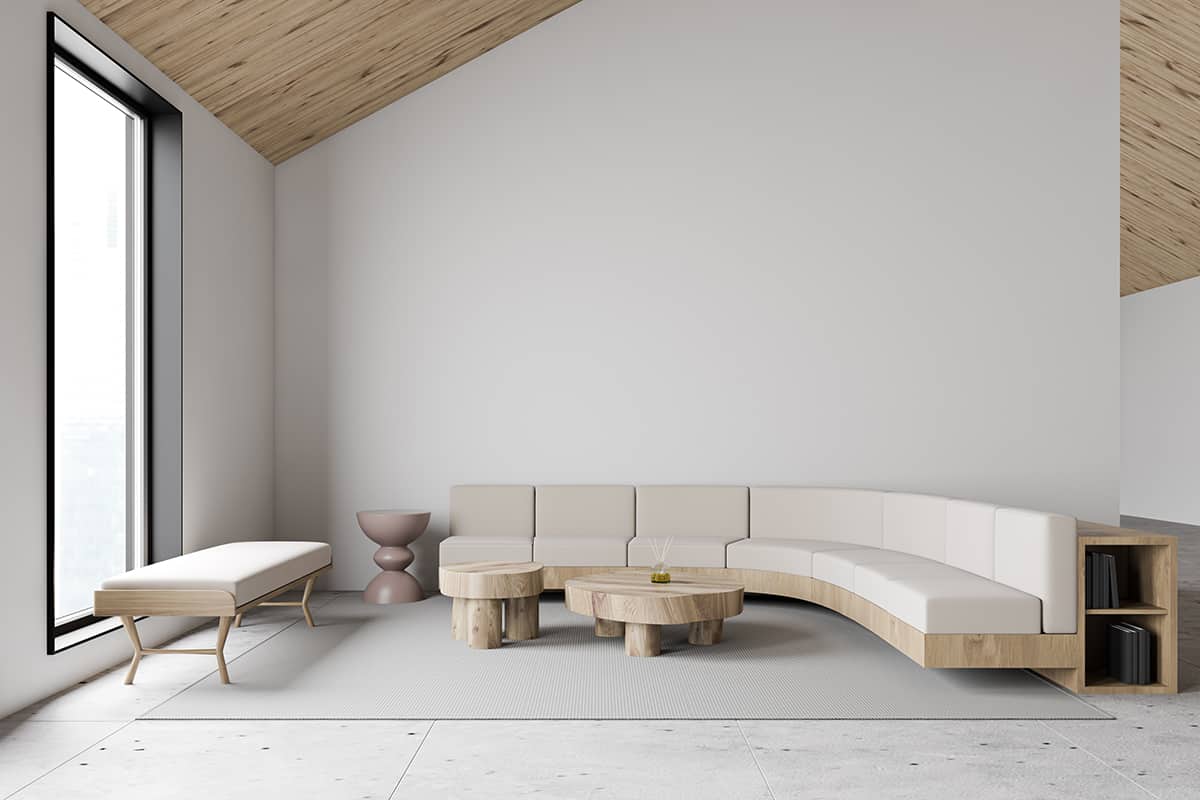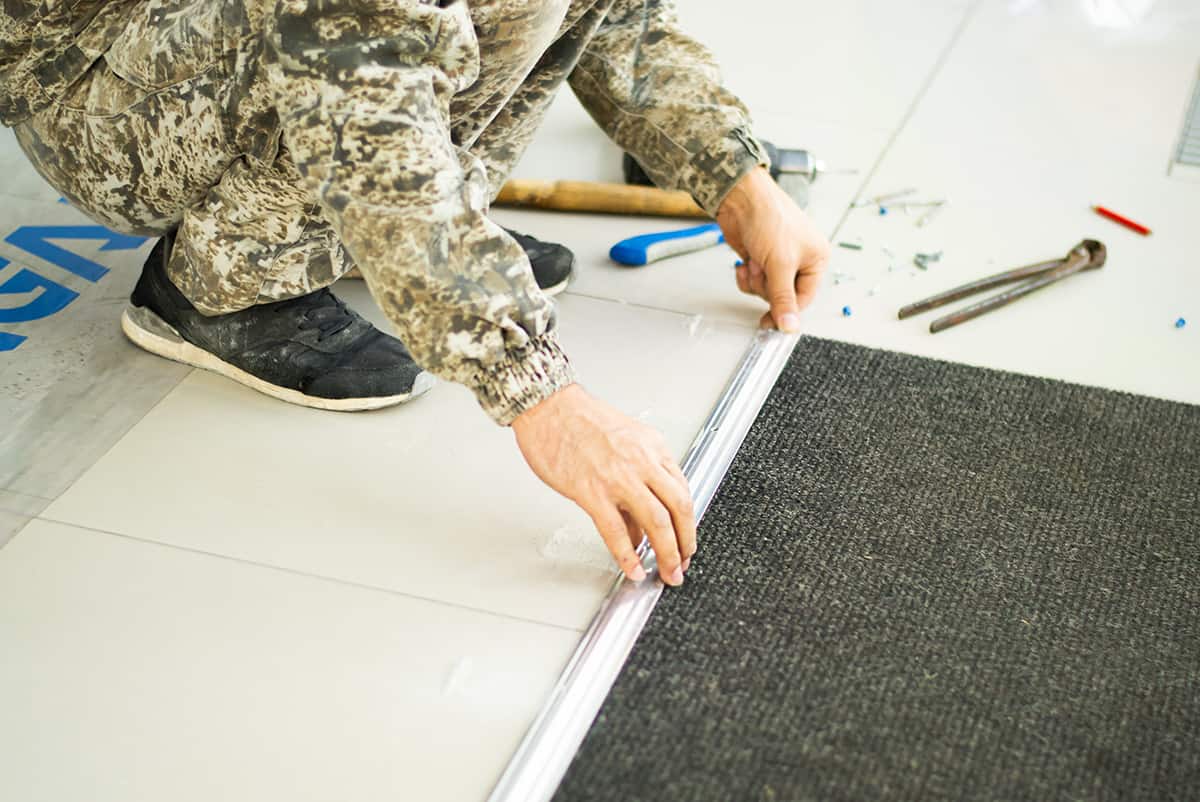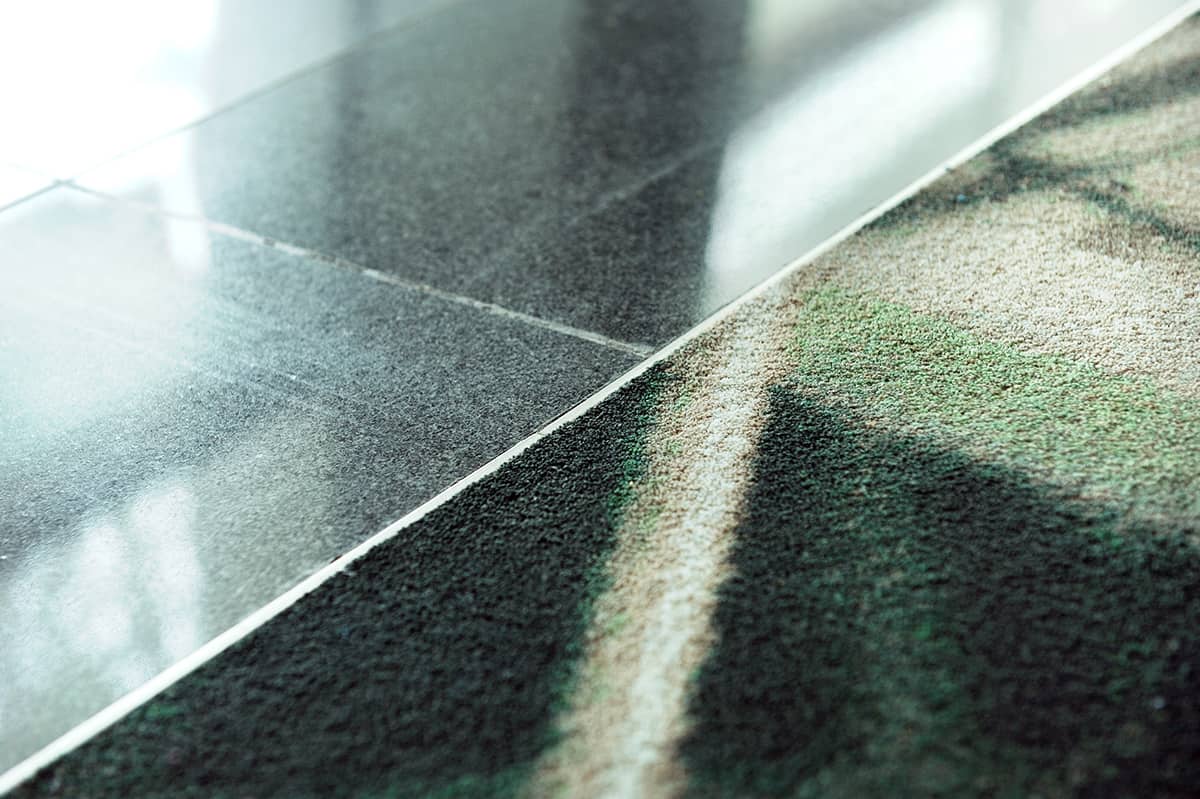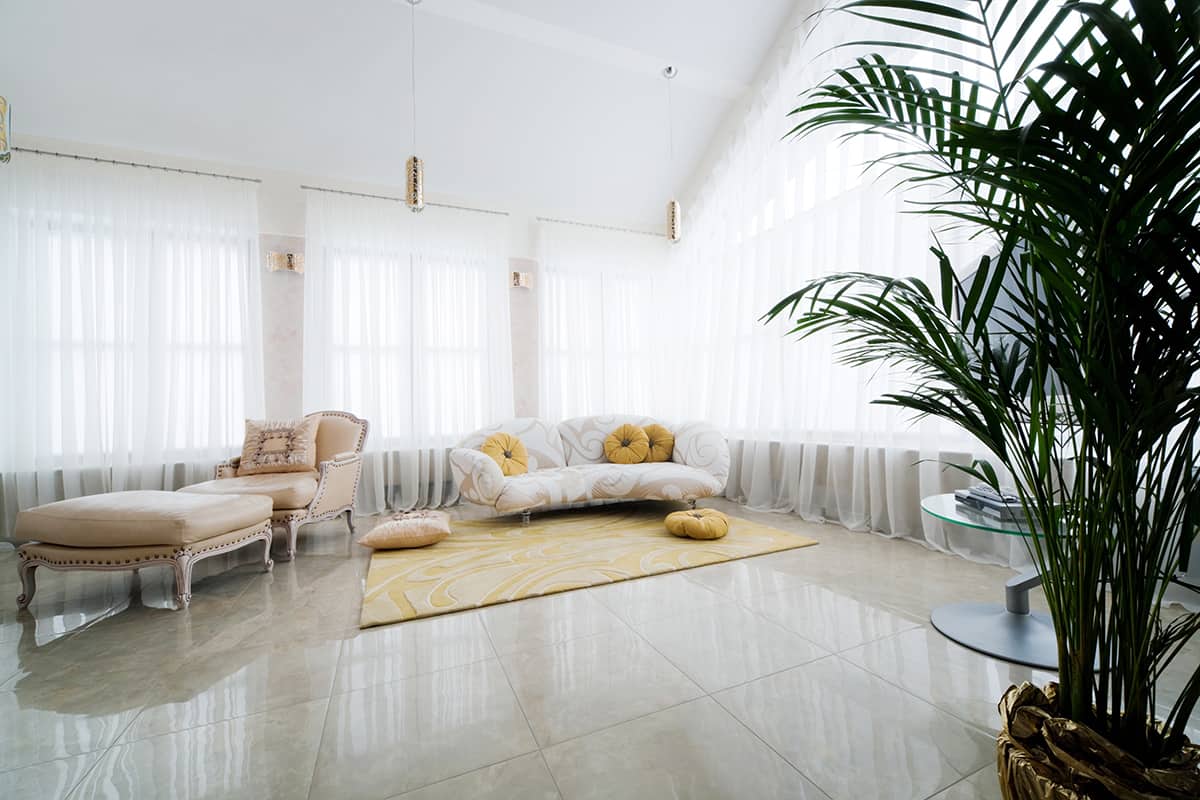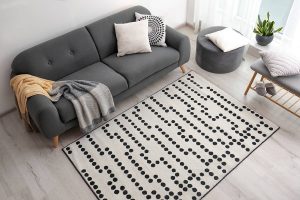Transitioning your flooring from carpet to tile can be intimidating, but it doesn’t have to be. With these few simple steps and some patience, you can have beautiful floors in no time.
This article will discuss how to tile around interior doorways only—like those between kitchen and living room or bedroom/bathroom thresholds—as well as exterior doorways like entry doors into your home from outside.
We will also discuss how best to meet up carpet tile with hardwood floors as well as ceramic tiles that are often used as baseboards near exterior door frames where there might be more movement caused by foot traffic inside versus out.
You can meet up tile to carpet in these three ways
- Transition strips are used for doorways.
- T-molding is made for the edge of doorways.
- Quarter round is used for baseboards.
Place a T-molding in the doorway between the two floors
When you have a doorway between rooms on different levels, it can be difficult to step in. When the floor is carpeted, and the ceiling is hardwood, it’s even harder.
To make it easier for people to walk into the room from stairs or from another room, place a T-molding in front of the door instead of tiles. The T-molding will allow for easy movement up and down steps without having to worry about tripping over uneven surfaces, along with making sure that your floors are protected from furniture damage by guests who might not be as aware as they should be.
Place a transition strip between doorways on the same level
One of the most common ways to meet up tile and carpet is with a transition strip. This is a piece of material that has the same height as your carpet or hardwood flooring. It can be placed directly on top of either surface or underneath if you prefer. Transition strips are an easy way to create one seamless flow from room to room, even when your floors are at different heights.
Each transition strip comes in different sizes, so you will need to measure both areas where they need to be installed as well as check if there’s enough space for installation before purchasing one!
Place quarter round over the seam between the carpet and tile
If you are short on time and want a quick solution, place quarter round over the seam between the carpet and tile. Quarter round is an inexpensive solution that can be applied in minutes. The only tools you need are a saw and nail gun. Paint matchable to your room decor if desired (you can buy quarter round at most hardware stores).
Quarter round is also a good option for temporary situations or when leaving joints exposed will not cause damage to your home or property—for example, if it’s been newly installed or if there’s no way for water to gather in those areas of tile grout which aren’t connected to floors by quarter round or other edging strips!
Tips for Transitioning from Carpet to Tile
Choose a carpet color that matches the grout
The color of your carpet should match the grout. This is a crucial step when matching carpet to tile because it can make or break the entire look.
When you’re choosing a color for either one, consider what’s beneath it: if there’s white tile beneath your carpeting, then a white or light grey grout will go nicely with it and make them seem more cohesive.
However, if you have darker tiles on your flooring and want to match those colors up with their surroundings instead of vice versa (this is especially true if you have black tiles), then choose brown or dark grey grout as an accent color in your room so that everything matches up well together overall!
There are many different shades available when selecting between these two types of materials used inside homes; however, they may still seem hard to find since they’re often sold separately from each other at Home Depot stores nationwide – but don’t worry! We’ve got some tips here at The Spruce Guide that can help
Pick a carpet color that blends with the tile’s trim
The trim around the tiles is a great guide for how to choose a carpet that matches the tile. You want the carpet to blend with the trim but not be identical. This will make it easier to add accents, such as throw pillows or accessories that pop!
With this in mind, stick with neutrals for your main color scheme and use bright pops of color where it makes sense. To avoid looking like a rainbow exploded across your floor space, pick one neutral (or two if you’re feeling adventurous) and use it consistently throughout different pieces in your room.
Match your carpet to the tile’s pattern
When you’re choosing a carpet to match your tile, it’s important to choose one that matches the tile’s pattern. For example, if your flooring has a lot of different colors and patterns in it, you may want to choose a carpet with a similar pattern. If your tiles are simple (e.g., black-and-white mosaics), then a plainer area rug can complement them well without overdoing it.
If the area rug is too busy or colorful, however, it will overwhelm the room and make everything appear smaller than it actually is because so much attention will be focused on what’s beneath your feet rather than on what’s above them.
If this sounds like you’re thinking about replacing all of the rugs in your home with stylish new ones but aren’t sure where to start or how much things might cost? Don’t worry—we’ve got some helpful tips! Read more here:
Go for the same color as the tile but with a different shade of gray
If you’d like to make your tile look like it’s a part of the carpet, go for the same color but with a different shade of grey. Grey is a great choice for this project because it’s neutral and goes well with most other colors.
A common mistake people make when designing their homes is that they use too much color. They think that by doing this, they will be able to create something unique, but in reality, all they do is clutter things up and make their home look tacky.
A good way to pick out what shade of grey you want to use on your tile is based on which color scheme your room already has in place: if it’s red, then go for something darker such as black or very dark brown.
If there are blues then maybe try something lighter like light brown or cream; and if there are yellows then perhaps consider either white or beige instead because those shades usually work well together in most cases!
Choose a color that matches the tile in general but doesn’t match any one feature specifically
If you’re deciding between carpet and tile, the biggest thing to keep in mind is that your room should flow together. For example, if you have a light blue carpet and dark brown wood floors, it may be hard for the two surfaces to mesh well because they are so different. Your rooms should have some sort of visual continuity that visually connects them together.
If you’re choosing between carpets or tiles for this project, pick a color that matches the tile in general but doesn’t match any one feature specifically. Look at the overall color of your tile and pick a similar color for your carpet; make sure it’s visually similar enough that it works with both materials without overpowering either one too much.
Conclusion
Now you’re ready to tackle your own flooring transition! You’ll want to carefully think about what materials, patterns, and colors to use for your carpet and tile, and even for the thresholds, to avoid spending money on something you don’t like.
If you do install something, though, and later decide you don’t like it, the good news is that you can always fix a mistake in home improvement or home decorating. Don’t be too intimidated or anxious. Just be patient as you try something new.
